|
Potentially present (PP)
Agriades pyrenaica dardanus / Bosnian Blue
Dardania
Lycaenidae - Polyommatinae
Agriades dardanus (Freyer, 1843) TL: Turkey.
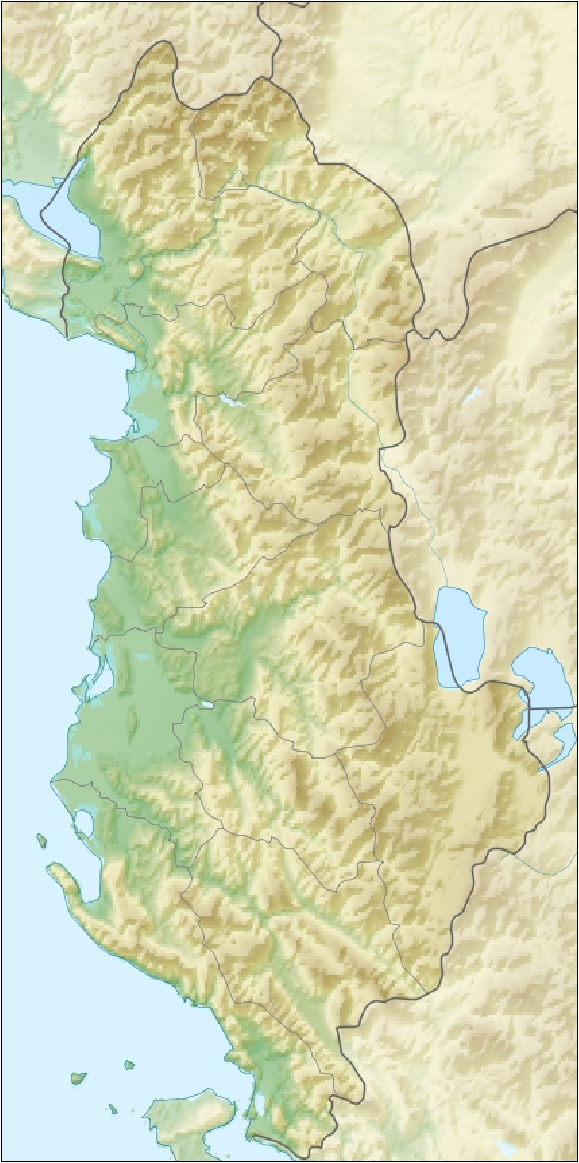 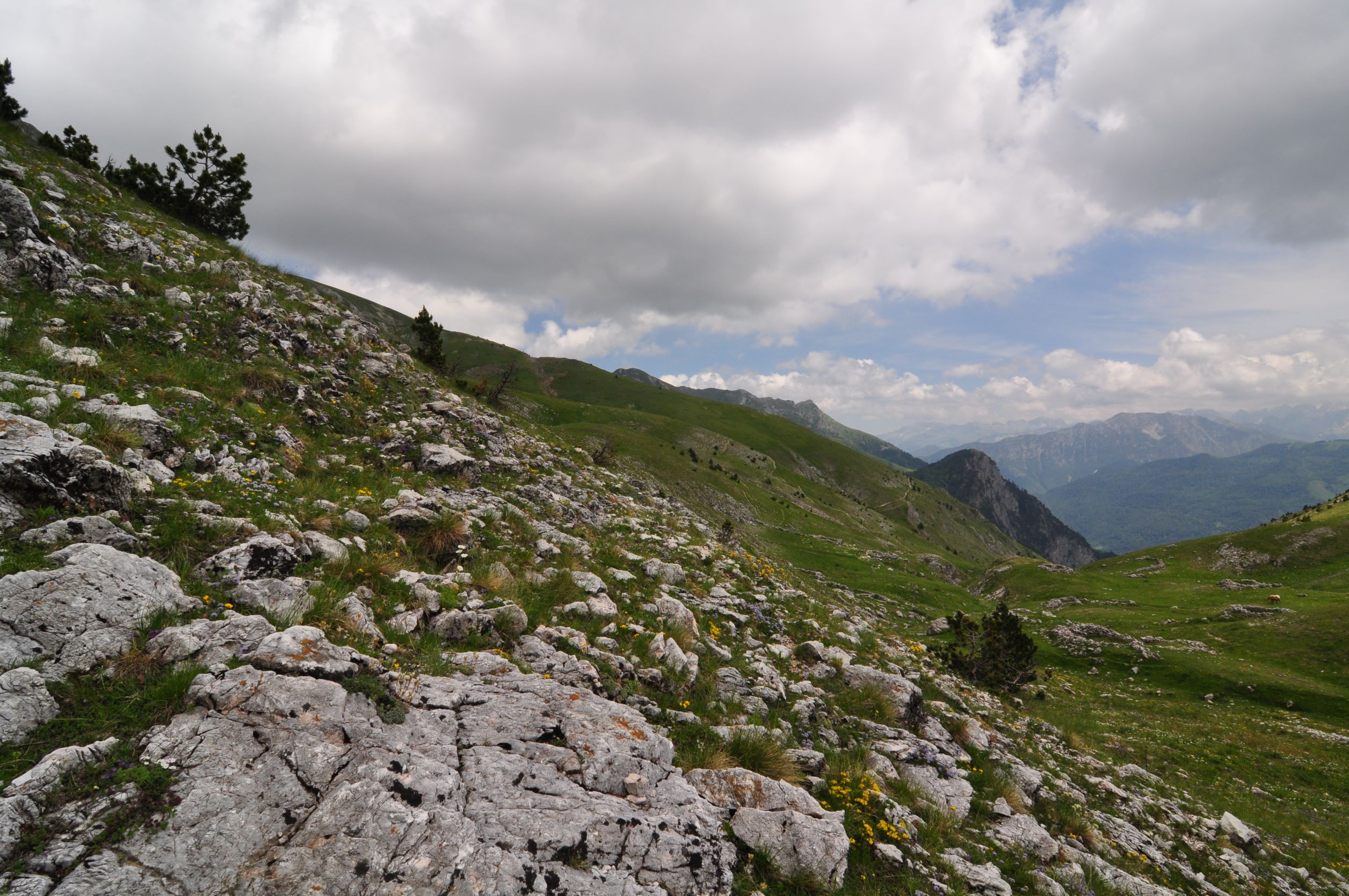
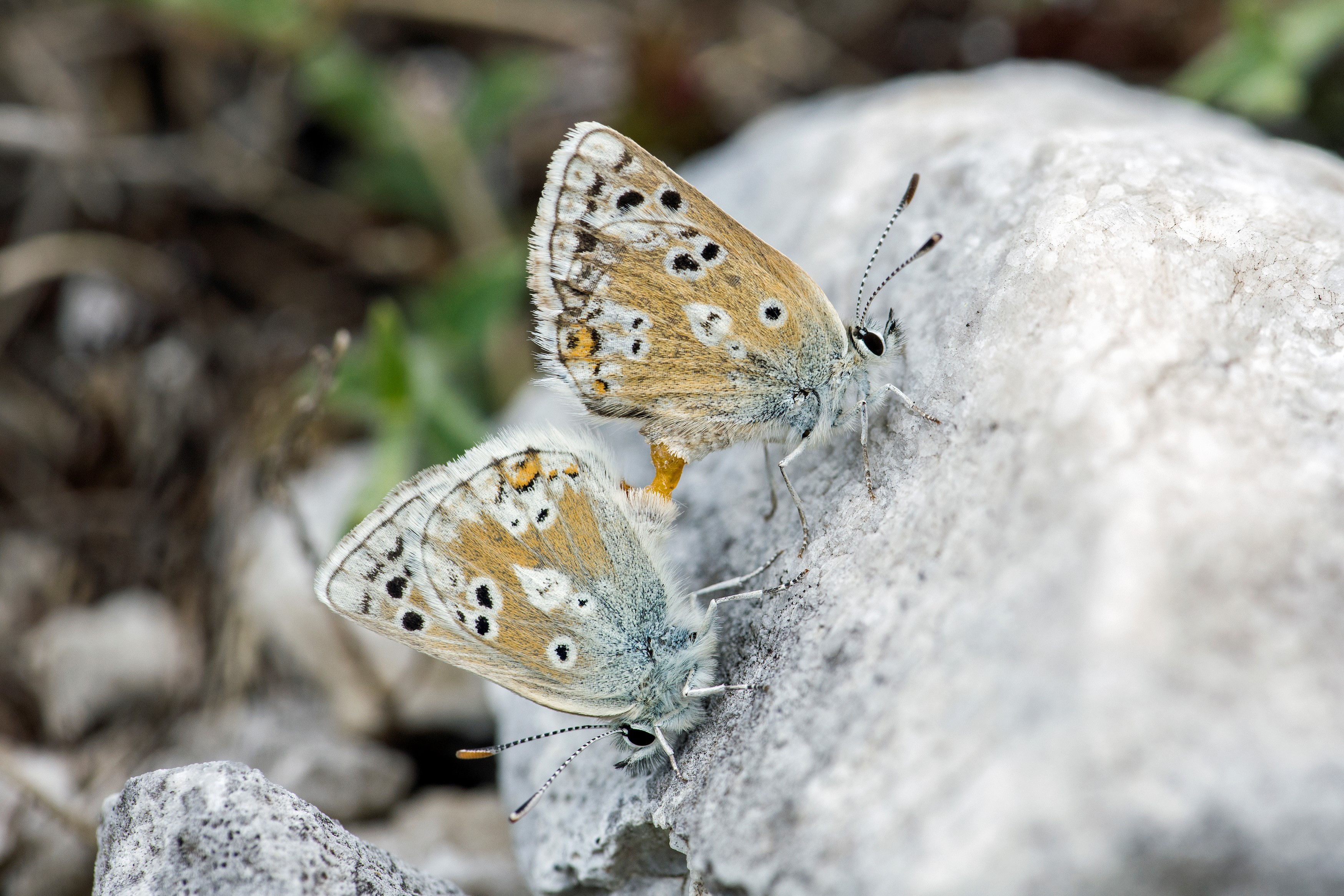 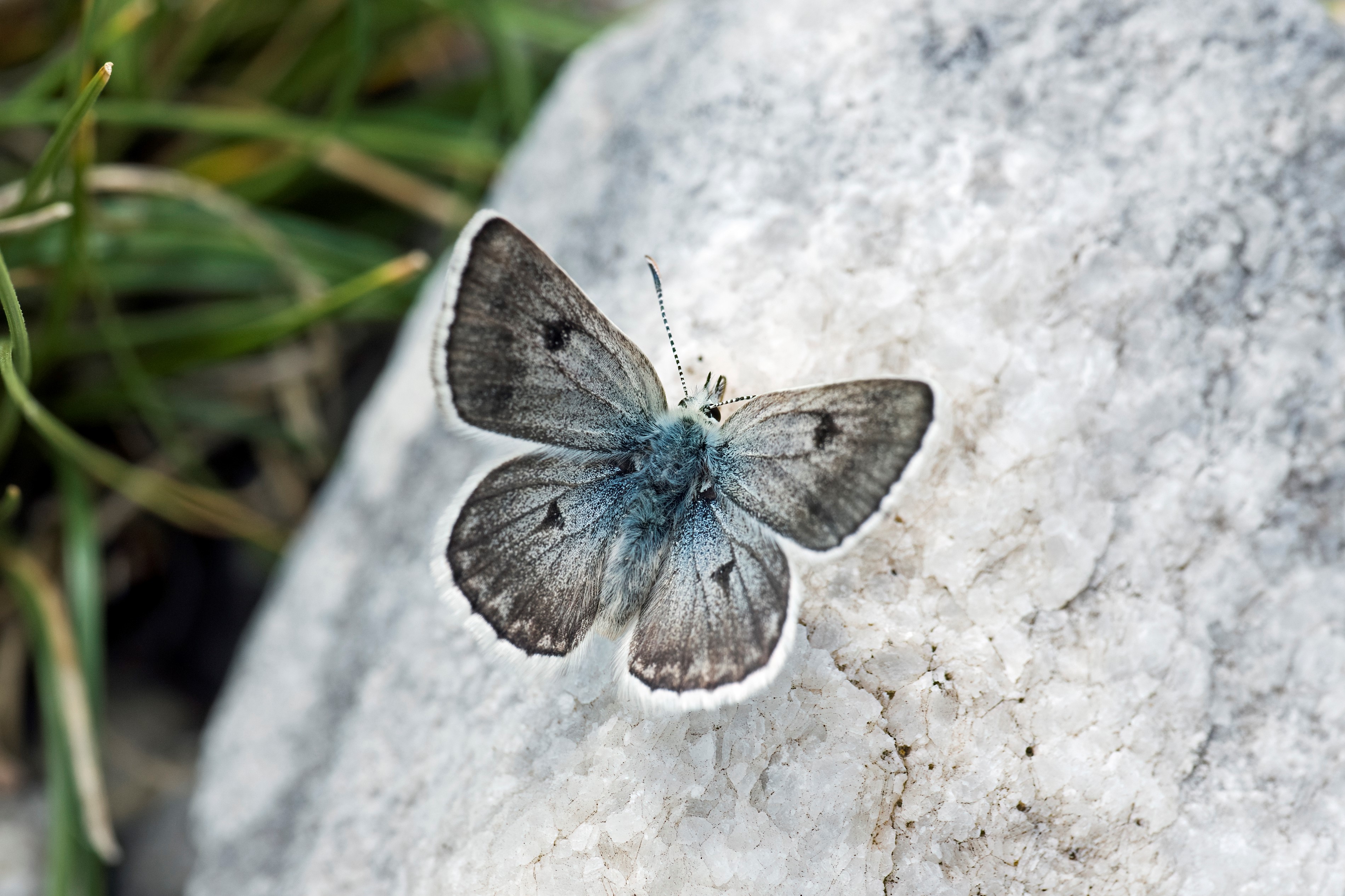
 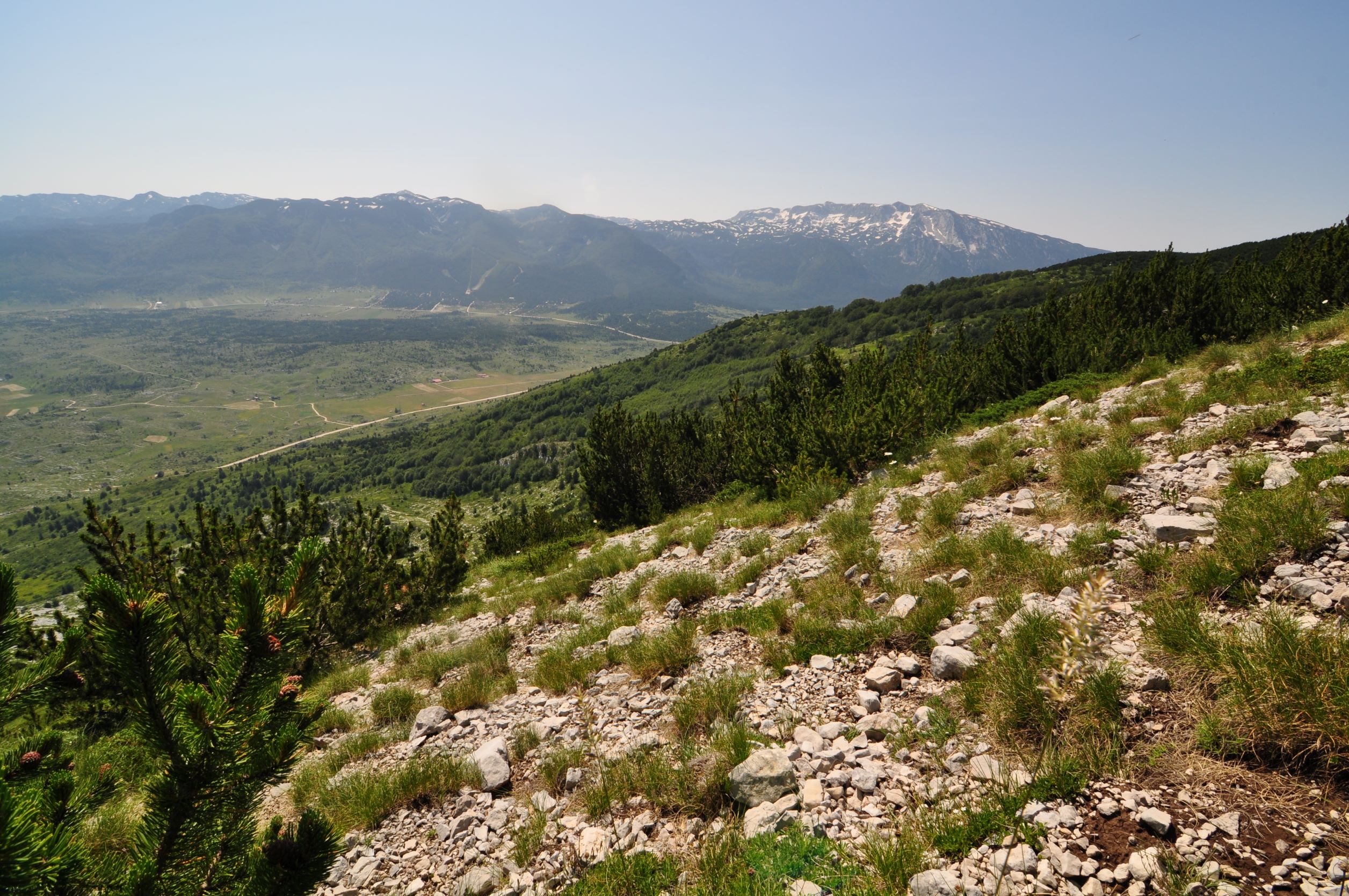
1a. Agriades pyrenaica dardanus, distribution map (09.i.2025).  Historical data ; Historical data ;  Additional data from the 2018 update ; Additional data from the 2018 update ;  New observations since the 2018 update. New observations since the 2018 update.
1b. Potential habitat of Agriades pyrenaica dardanus. Vermosh, Albania (© Sylvain Cuvelier)
1c. Agriades pyrenaica dardanus copula. Bulgaria (© Vlad Dincă)
1d. Agriades pyrenaica dardanus ♂ upperside. Bulgaria (© Vlad Dincă)
1e. Androsace villosa, foodplant of Agriades pyrenaica dardanus. Vermosh, Albania (© Sylvain Cuvelier)
1f. Habitat of Agriades pyrenaica dardanus. BIH (© Sylvain Cuvelier)
Note
It is a species that has never been mentioned from Albania and is extremely local in the Balkan Peninsula, known from a limited number of mountains in Bosnia and Herzegovina, NMK (Krpač & Darcemont 2012), Bulgaria (Abadjiev 2001) and GR (Pamperis 2009, Pamperis 2022).
The species flies in one generation in June and July between 1250 to 2200 m a.s.l. It is a small, inconspicuous butterfly that flies low over the ground, frequently stopping for nectaring or sitting on stones.
Androsace villosa (Fig. 9) is present in Albania near Vermosh, on Maja e Gjallicës, Mali i Munellës, Mali i Korabit and Mali i Thatë and some localities show resemblance to the known biotopes of A. pyrenaica dardanus.
Therefore, we add A. pyrenaica dardanus as a potential species. Research for A. pyrenaica dardanus should be focused, from mid-June to mid-July, on small rocky ridges with A. villosa.
Description
♂♂
Small butterfly. Fw: 11-12 mm.
Ups: extensive grey-blu gc with fuscous, dark marginal border.
Upf: conspicuous discal spot.
Uph smal discal spot, small dark antemarginal spots.
Uns: grey-brownish gc.
Unf: basal spot in cell and black spots in usual pattern.
Unh: vestigial to small dots, conspicuous central white spot.
♀♀
Similar size.
Ups: brown to grey brown gc.
Upf: consipicuous discal spot.
Uph: small discal spot.
Uns: light brown gc.
Unf: strongly marked basal spots and black spots in usual partern.
Unh: some dots are absent or vestigial, conspicuous central white spot (few dark scales can be present)
Similar species
None.
Life cycle
Adults: single generation from mid-June to early August.
Egg: probably short stage.
Caterpillar: probably hibernating and feeding in spring.
Pupa: probably short stage.
Habitat
Agriades pyrenaica dardanus inhabits open rocky areas with gravel in higher mountain areas on limestone, often on small rocky ridges between 1500 to 2100 m a.s.l.
Spatial requirement modest, population density sometimes high.
Foodplants
Caterpillar feeds on Androsace villosa.
Butterflies feed on low flowers in the habitat.
Distribution
Albania: never recorded.
Balkan: AL - BG - BIH - GR - HR - NMK - MNE - RKS - RO - SLO - SRB
Europe: IB - IT - ALP - BAL - NWE - UK - SCA - EEU
Asia Minor, Transcaucasia, Caucasus and N.W. Iran.
Conservation status
Agriades pyrenaica dardanus is not endangered, very local and only a few, widely scattered localities in the Balkans.
Albanian Red List: NA.
IUCN Red List, category at the Mediterranean level: NA.
Useful links
Lepiforum
Euroleps
euroButterflies
|
 xx
xx 



 Historical data ;
Historical data ;  Additional data from the 2018 update ;
Additional data from the 2018 update ;  New observations since the 2018 update.
New observations since the 2018 update.